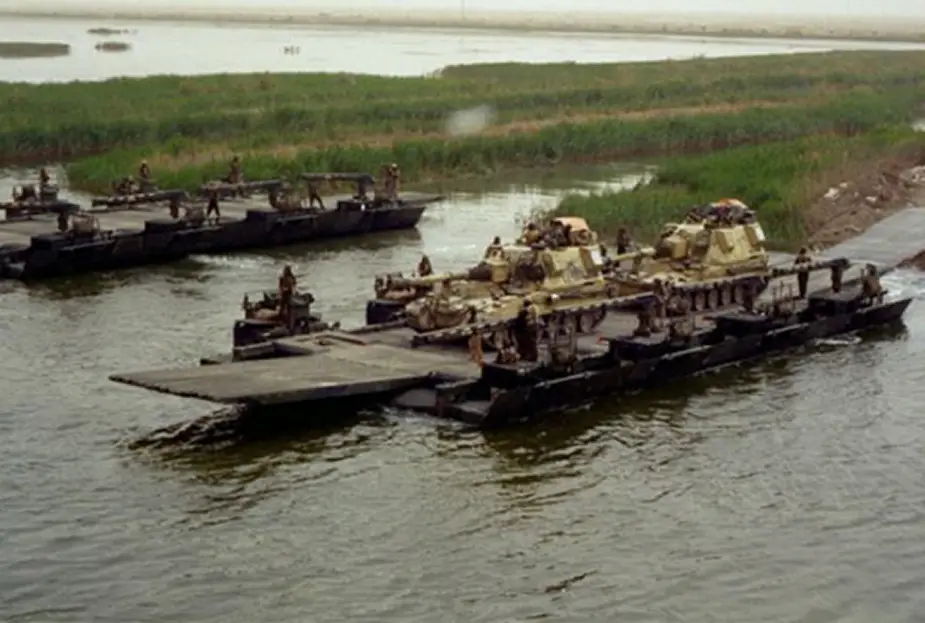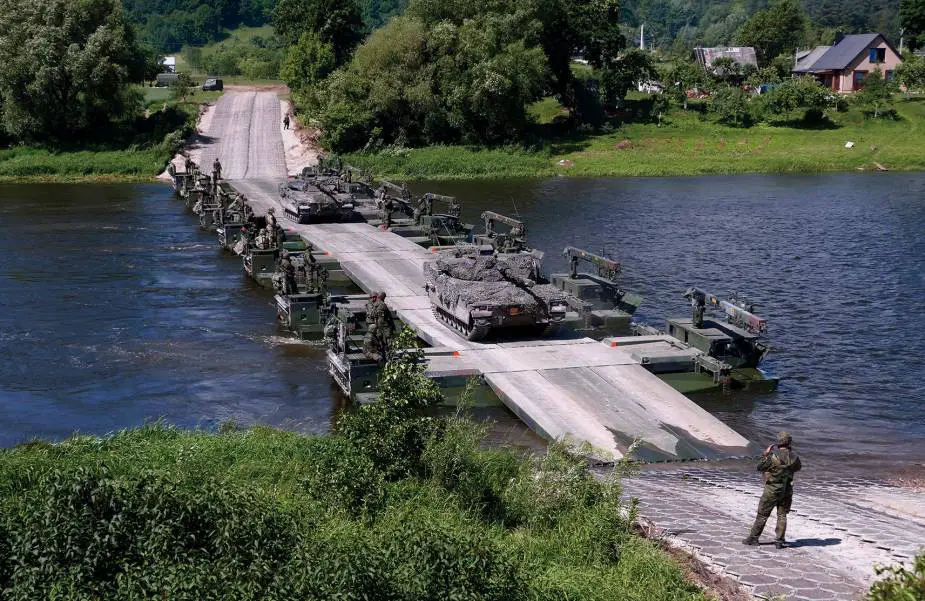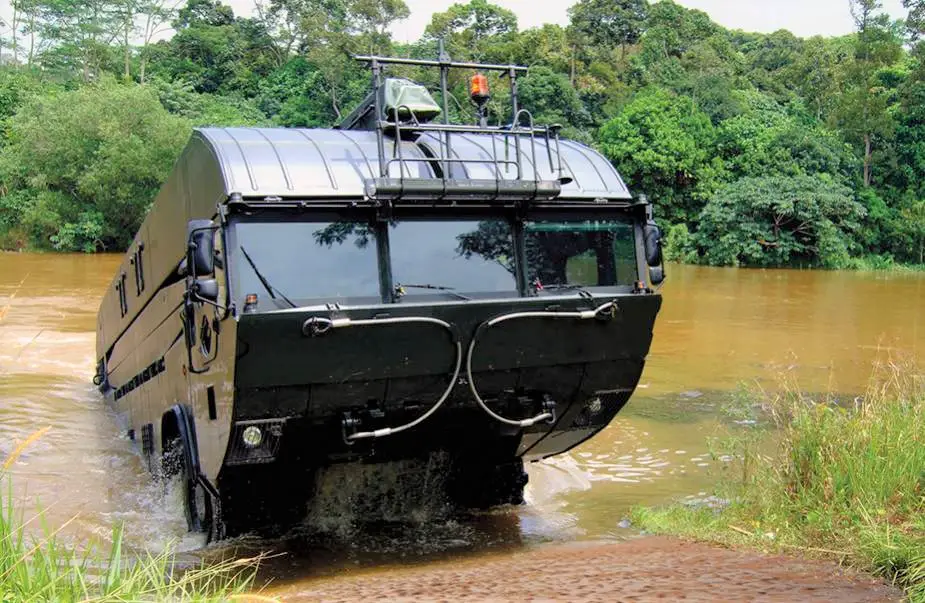Breaking news
Hanwha Defense leads production of first DAPA South Korean floating assault bridge.
With technology transfer from a GDELS, South Korea started the production of a new type of self-deployable floating bridge that can also be used as a ferry, Kim Joo-heon reports in Aju Business Daily.
Follow Army Recognition on Google News at this link

DAPA’s floating bridge was developed mainly with GDELS and Hanwha Defense for the South Korean army (Picture source: courtesy of DAPA)
Hanwha Defense has led the project to improve the performance of South Korea's aging wet-gap crossing equipment called the U.S. Ribbon Bridge System (RBS), which is a modular, aluminum-alloy, and continuous floating bridge system. Unlike RBS, which requires about six hours of preparation time, the new equipment can reduce installation time by 60 to 70 percent. The number of operating soldiers can be reduced by up to 80 percent, , Kim Joo-heon reports.
Technology has been transferred by General Dynamics European Land Systems (GDELS). Thirty-five South Korean companies are involved in the project to localize key components including hull structures.
The first unit of the new self-propelled, amphibious bridging vehicle was demonstrated on September 20 under a localization program that will have cost some 530 billion won ($381 million) by 2027, according to the Defense Acquisition Program Administration (DAPA) echoed by Kim Joo-heon.

Under the Korean Amphibious Bridging Vehicle (KABV) program, the GDELS M3 Amphibious Bridge & Ferry System would be localized to meet specific Korean requirements and would be designated M3K. (Picture source: GDELS)
On September 30, 2021, General Dynamics European Land Systems (GDELS) announced that it and its partner, Hanwha Defense Corporation (HDC), had been selected by the Republic of Korea’s Defence Acquisition Program Administration (DAPA) to jointly produce amphibious bridging vehicles for the Republic of Korea Army.
Under the Korean Amphibious Bridging Vehicle (KABV) program, the GDELS M3 Amphibious Bridge & Ferry System would be localized to meet specific Korean requirements and would be designated M3K. The M3K was chosen in a competitive selection process.
M3 is the world’s fastest and most capable amphibious bridge and ferry system based on load capacity, assembly time and maneuverability, both on water and land. The M3 is already operated by the militaries of Germany, the United Kingdom, Taiwan, Singapore and Indonesia. With more than 1.3 km of bridge length, the Republic of Korea will operate the largest M3 fleet.
“We are very delighted that the Republic of Korea is the fourth Asian customer to select our M3 as their future amphibious bridge and ferry system,” said Dr. Thomas Kauffmann, GDELS’s vice president of international business and services. “It reconfirms the unique bridging capabilities of the M3 and demonstrates the essential importance of tactical bridging for modern armies in terms of interoperability and military mobility.”
“From an industrial point of view, this project is a great success for our employees here in Kaiserslautern,” said Dr. Christian Kauth, vice president and managing director of GDELS-Bridge Systems. “We have established an excellent collaboration with our Korean partner Hanwha. The success is (further) proof of the general advantage of 4x4 solutions when it comes to amphibious bridging and demonstrates the leading role of GDELS in the military floating bridge market.”

M3 is the world’s fastest and most capable amphibious bridge and ferry system based on load capacity, assembly time and maneuverability, both on water and land. (Picture source: GDELS)



















